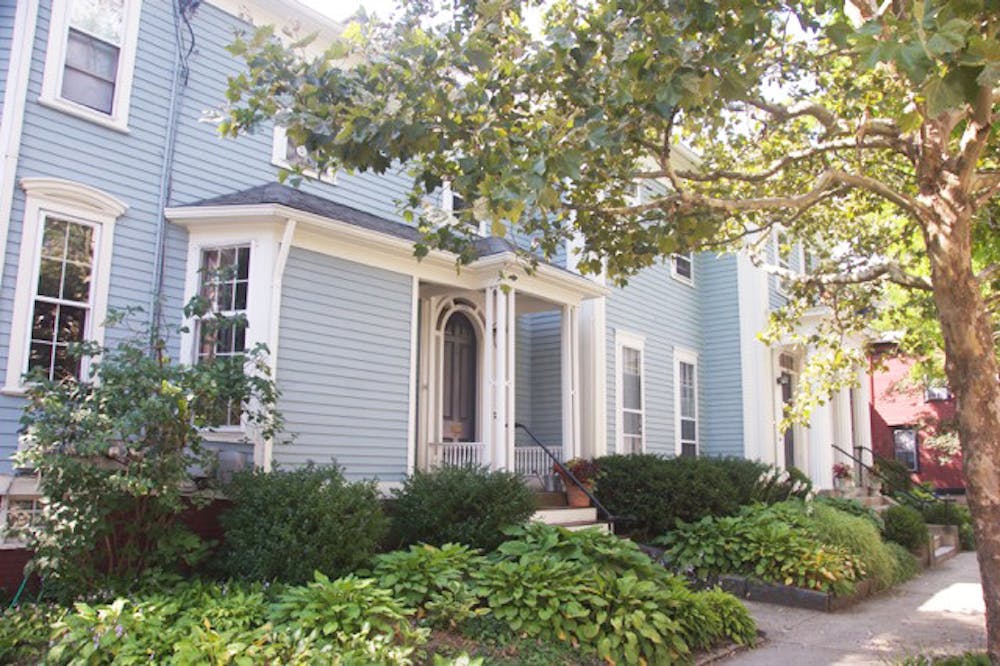The University boasts a geographically diverse student body, with students hailing from all 50 states and 71 countries. Yet a portion of this community has developed a deep familiarity with the neighborhood before attending Brown: 14 to 16 undergraduates from Providence matriculate each year, wrote Dean of Admission Jim Miller ’73 in an email to The Herald.
These students come to Brown from an array of backgrounds and areas of Providence with experiences in public and private high schools. Home towns are a huge part of anyone’s identity, and that holds true for students staying in their home town for their college experience.
Admission officers pay several visits to Providence high schools and invite guidance counselors at those schools to events on campus, Miller wrote. The School of Professional Studies and the Swearer Center for Public Service also host several summer programs for Providence high school students, he wrote.
But many Providence natives were not drawn to Brown during their high school careers.
Lucrezia Sanes ’17, who attended the Wheeler School right next to Brown’s campus, said most of her classmates were not interested in attending Brown because it was too close to the environment in which they grew up.
Tamara Upfal ’18, also a graduate of the Wheeler School, said she was wary of applying to Brown because of its proximity to her childhood home.
On the other hand, Lehidy Frias ’17 had never even heard of Brown as a student at Classical High School in the South Side.
But growing up in Providence and going to college in Providence may provide strikingly different experiences.
Going to school in Providence is like “being in a completely different world that just happens to look the same,” Upfal said.
Tommy Chase ’19, a graduate of the Moses Brown School, echoed this sentiment. Chase said Brown “feels like its own little city” compared to the neighborhood where he grew up.
Many students who hail from Providence have parents on the Brown faculty and staff. Sanes’ father is a professor of neuroscience, while Upfal’s father is a professor of computer science. Sanes said she and her parents make a conscious effort to foster a realistic college experience despite this tie.
Spencer Roth-Rose ’17, whose mother serves as regional development director in the Advancement Office, said he attempts to “approximate the experiences of a college student” despite his ability to call his mom at random for a trip to the grocery store.
Many Providence natives feel that their peers, who hail from farther away, do not take advantage of all the city has to offer.
Roth-Rose said he thinks he and his friends do not explore Providence enough. As the campus continues to bustle with activities and events, Roth-Rose said he rarely ventures out into the town he once frequented often.
“There are certain parts of the city people will explore, but people never go to Federal Hill or Olneyville,” Sanes said, adding that there is so much more to the city than the East Side and Wickenden Street.
Several students from Providence highlighted the phenomenon of the “Brown bubble,” in which a divide persists between the campus and the surrounding community.
“We often talk about the ‘Brown bubble,’” Frias said. “Providence feels that bubble too.”
Felipe Ferreras ’17 encouraged students to expand their boundaries and relationships with Providence. A South Side native, Ferreras attended the Wheeler School and became “more aware of certain problems in Providence” upon matriculating at Brown. The relationship between Brown and the greater Providence community is fraught with tension, especially economic tension, he said.
“I know what it means to go up the hill,” Ferreras said. “When you go up the hill, everything else goes up too — income, quality of living.”
Ferreras said he “immediately encounters a different demographic” downtown. While Brown boasts a diverse student body, Providence prides itself on its strong Caribbean-American and Southeast Asian communities, he said.
The economic relationship between Brown and Providence is complex: Though the University remains tax-exempt for its private properties as an educational institution, it pays taxes on its commercial properties and the spaces it leases. In 2012, then-President Ruth Simmons and Mayor Angel Taveras signed an agreement under which the University would pay the city an additional $31.5 million over 11 years. In fiscal year 2014, the University paid the city $8 million in voluntary and property tax payments.
But Sanes said she thinks the University has also contributed to the gentrification of the East Side. “There’s resentment towards Brown” among locals due to what they perceive as its gentrifying effects. “People think that Brown is a bastion of privileged white kids who walk around and act like they own the place,” she added.
Many students from Providence feel a responsibility to give back to the community from which they came.
Frias has organized several trips to local Providence schools in conjunction with the Brown Center for Students of Color. But she expressed frustration with the fact that many Brown students backed out of these trips at the last minute.
As a pre-med history concentrator, Ferreras said he hopes to use the knowledge and connections he gained at Brown to provide affordable health care to underprivileged areas including parts of Providence, adding that he wants to “take the goodness at Brown and ameliorate some of these problems.”





